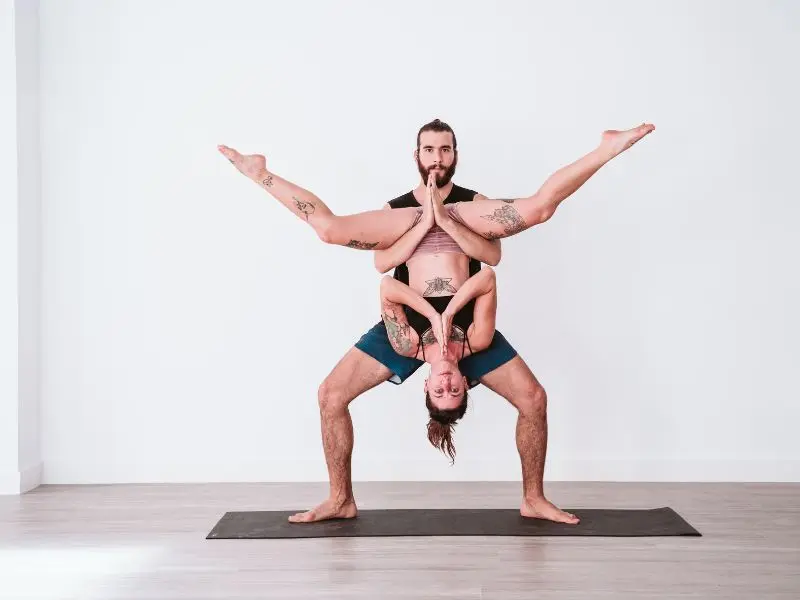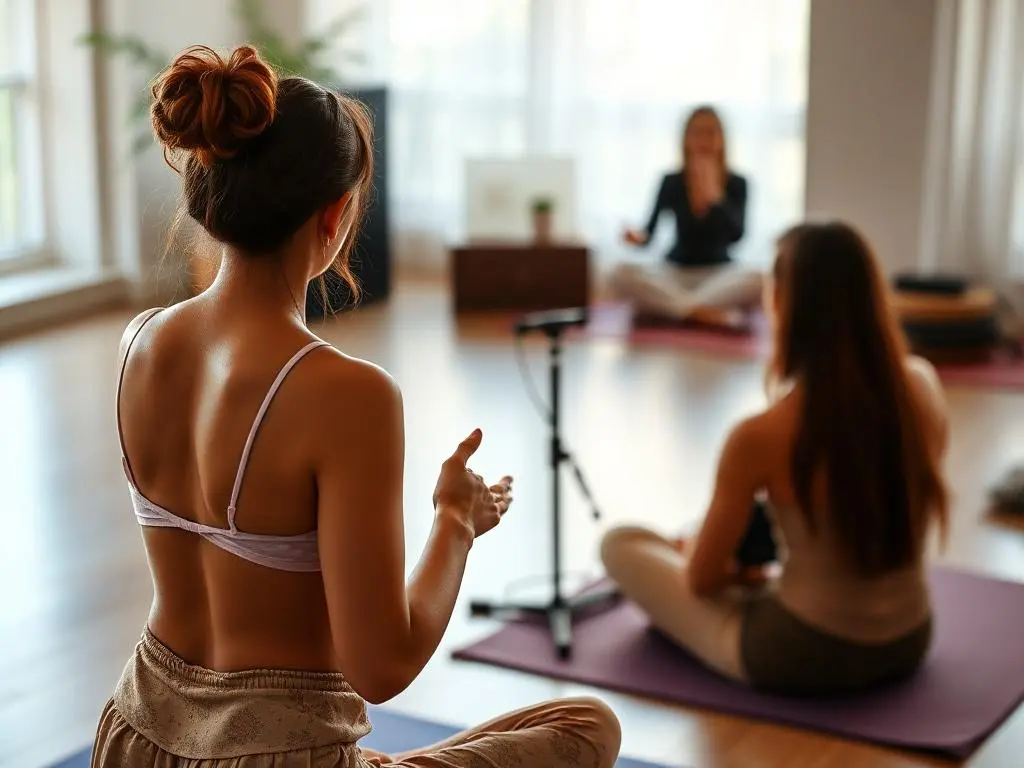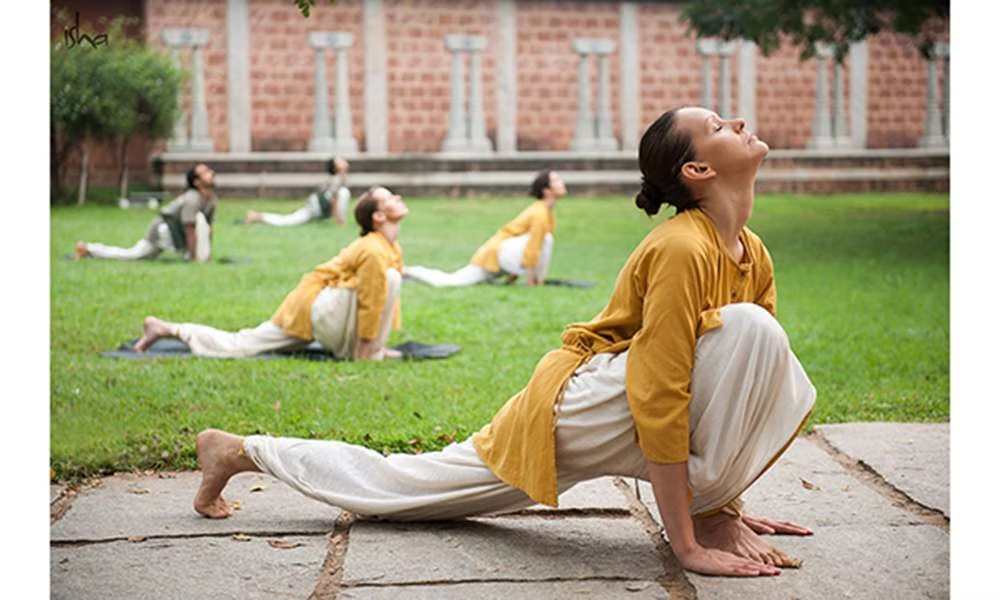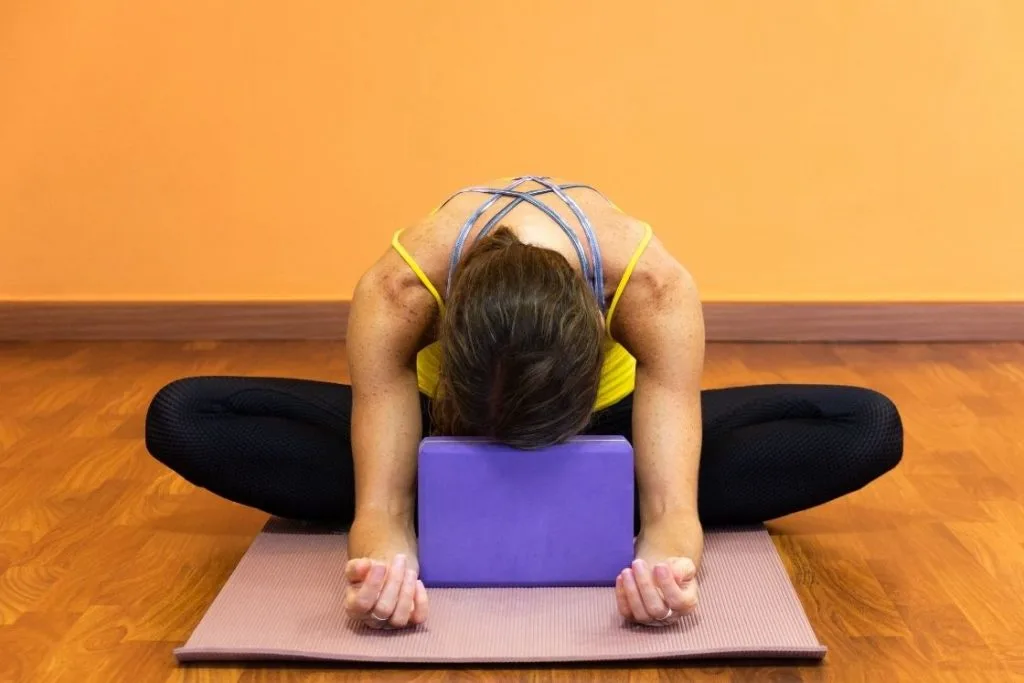Practice This Easy 6-Pose Yoga Sequence for a Happy, Healthy Back
Most of us spend a lot of time sitting, often in uncomfortable positions. Whether you’re sitting at a desk, on the floor, or traveling, this little yoga for the back sequence will stretch your back, shoulders, and hips so that you can sit more comfortably and so that you can sit for longer.
This can help enhance your meditation practice, your creative and artistic projects at work or at home, your capacity to be productive and your ability to find stillness.
As an acupuncture physician and traveling yoga teacher, I have found these stretches incredibly therapeutic for relieving aches, pains, and stiffness from holding my body in uncomfortable positions while working or on long plane and car rides.
Long Flight? Practice These 9 Yoga Poses in Your Plane Seat to Soothe Your Sore Body
These are my go-to moves for stretching out in-between yoga teacher training sessions (where I often sit on the floor for hours at a time). It is also a great sequence first thing in the morning to get prana flowing!
These basic asanas are beneficial to everyone who wants a little more circulation throughout their spine, back, shoulders, and hips.
According to Georgetown University’s Health Policy Institute, 65 million Americans currently suffer from back pain. Chances are, this statistic includes you or someone you know.
So, I recommend this yoga for the back sequence for everyone: students, people who sit or stand at a desk, athletes, chefs, and even musicians who experience imbalance in their backs and shoulders from holding instruments.
Yoga for the Back: Practice This Yoga Sequence to Maintain a Healthy Spine

Begin seated on the floor (this can also work in a chair). Close your eyes and set an intention of vibrant health and well-being or anything else that resonates with you.
Connect with the sensation of breath, and fully arrive in your body in the present moment as you prepare for your practice of yoga for the back.
1. Spinal Flexion and Extension
This movement helps us to take deeper breaths, stretches the diaphragm, and “massages” the abdominal organs.
Flexion and extension relieves tension in the shoulders and upper back. It also increases mobility of the pelvis and brings circulation to the lower back.
Let’s Try It:
- Inhale as you reach your arms overhead
- Interlace your fingers, arch your back, and expand your chest
- Exhale as you curve your spine forward
- Stretch the space in between your shoulder blades while pressing your palms forward, and tuck your chin slightly so your ears are in-between your arms
- Repeat this movement for three to five breaths
2. Side Bends

Side-bending is an unusual movement for most people. Common daily activities rarely bring the body into a lateral plane of motion.
Opening the side body benefits the back muscles, helps align the spine, hydrates intervertebral discs, opens energy pathways, and tones the organs.
Let’s Try It:
- Inhale as you reach your arms to the sky
- Exhale your fingertips to the ground on each side of your hips with arms outstretched
- Inhale your right arm up
- Exhale your right arm over and across your head as you side bend your torso to the left
- Inhale and return back to an upright position
- Stretch your left arm up as you lower your right arm back down
- Exhale your left arm over and across your head while side bending your torso to the right
- Repeat for a total of three to five times on each side. If it feels good, you can hold the side bend for a couple of breaths while making circles with your wrist or shoulder joints
3. Twists

Twists are great for our nervous system because they wring and rinse the spinal cord and nerve roots.
This helps balance our nervous system, relieves stress and tension, and promotes circulation. Twists are also beneficial to the muscles of the back and alignment of the bones in the spine and shoulder girdle.
Let’s Try It:
- Inhale both arms overhead
- Exhale twist to the right. Lower your arms and hands down on your right side to press yourself a little deeper into the twist
- Remember that you can twist more when you start at your waist and continue twisting from the bottom upward
- Inhale your arms up again
- Exhale and twist in the opposite direction
- Inhale back to center with your arms overhead. Twist on the exhale while lowering your arms
- Repeat three to five times in each direction. It might feel nice to hold the last twist on each side for three to five deep belly breaths
Avoid Back Pain! Practice These 5 Yoga Poses For a Strong and Healthy Spine
4. Cat/Cow
This movement opens the hips, shoulders, and spine, tones the pelvic floor, and boosts immunity by massaging the lymph nodes in the axillary (underarm) and inguinal (groin) regions.
Let’s Try It:
- Position yourself on all fours
- Take a moment to get comfortable and move in any way that feels good
- Bring your awareness to your pelvis and begin each movement from here
- Inhale, tip your pelvis forward, draw your navel toward the ground, roll through your spine, open your chest, and gently look up. This is Cow Pose
- Exhale, tilt your pelvis, point your tailbone to the earth, draw your low belly in, round your spine, and draw your chin to your chest. This is Cat Pose
- Breathe between these two positions (inhale Cow, exhale Cat) about three to 10 times
Practice These 5 Immunity Boosting Yoga Poses
5. Puppy Pose

This backbend is a deep opening for the thoracic region of the spine. Our thoracic is the least mobile segment of our spine due to the pair of ribs attached to the transverse processes of each vertebrae.
The thoracic spine naturally curves forward a little bit, which is exasperated by all of our forward reaching habits (like driving, cooking, writing, massaging, etc.), so back bending in the upper back is a very effective way to strengthen, balance, improve posture, and mitigate discomfort in this area of the body.
Let’s Try It:
- Start in a tabletop position
- Keep your hips over your knees and walk your hands forward until your back is arched with your arms stretched out in front of you and release your chin or forehead to rest on the mat
- Press your fingertips into the earth and tent your palms
- Stretch through your underarms
- Press your breastbone down toward the ground
- Breathe here for as long as you like
6. Child’s Pose
Child’s Pose is a gentle shoulder opener and spinal stretch. It directs our focus inward and can help us feel grounded, relaxed, and calm. It’s a perfect yoga for the back posture.
Let’s Try It:
- Start in tabletop
- Bend your knees and press your hips to your heels
- Rest your hips toward your heels and rest your belly on your thighs
- Relax your forehead on the earth (or a prop) and stretch your arms forward
- Roll from side to side across your forehead, temple to temple
- Rest here for as long as you like. Notice the sensations in your hips, back, and shoulders
- Send love, gratitude, and healing energy to your body
The Takeaway on Yoga for the Back
Practice this yoga for the back sequence on its own or add to it. Let your innate body wisdom move you in all of the ways that you need. Always leave some time in your practice to be spontaneous. Honor your process and continuously move toward balance.
These simple movements will help to keep your back healthy, strong, and supple. They hydrate the intervertebral discs, which is important for injury prevention. And these movements maintain healthy alignment of the vertebrae and also of the paraspinal muscles and proper alignment equals a pain free experience.
Got Back Pain? These Are the 7 Best Yoga Poses For Back Pain Relief
Moving the spine with these techniques supports waste removal from a cellular level all the way up to a systemic level, and T.K.V. Desikachar tells us that yoga is 99% waste removal.
Most importantly, these yoga for the back exercises enhance and unblock the circulation of vital nutrition and energy to optimize the health of our whole body.
All included information is not intended to treat or diagnose. The views expressed are those of the author and should be attributed solely to the author. For medical questions, please consult your healthcare provider.










